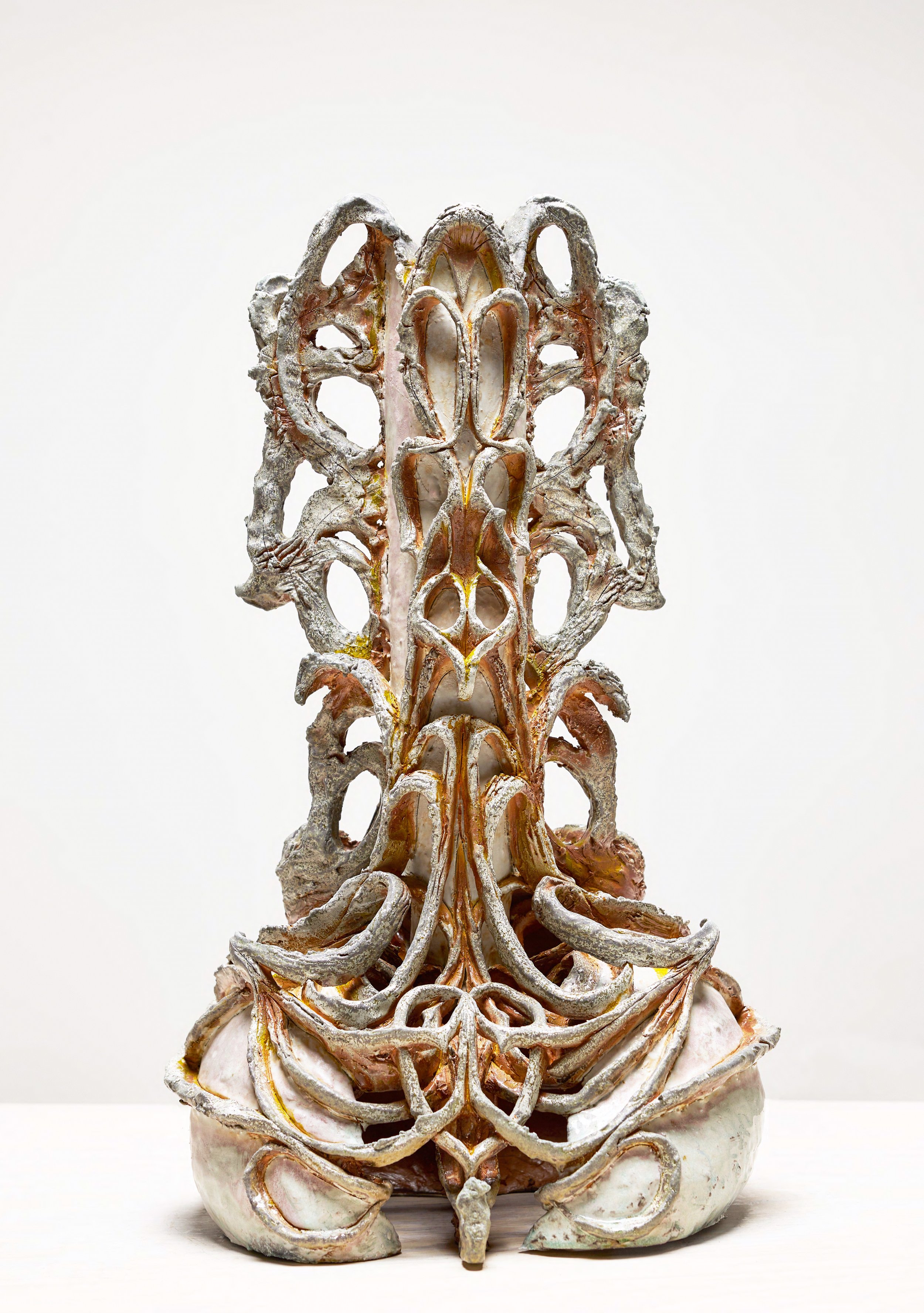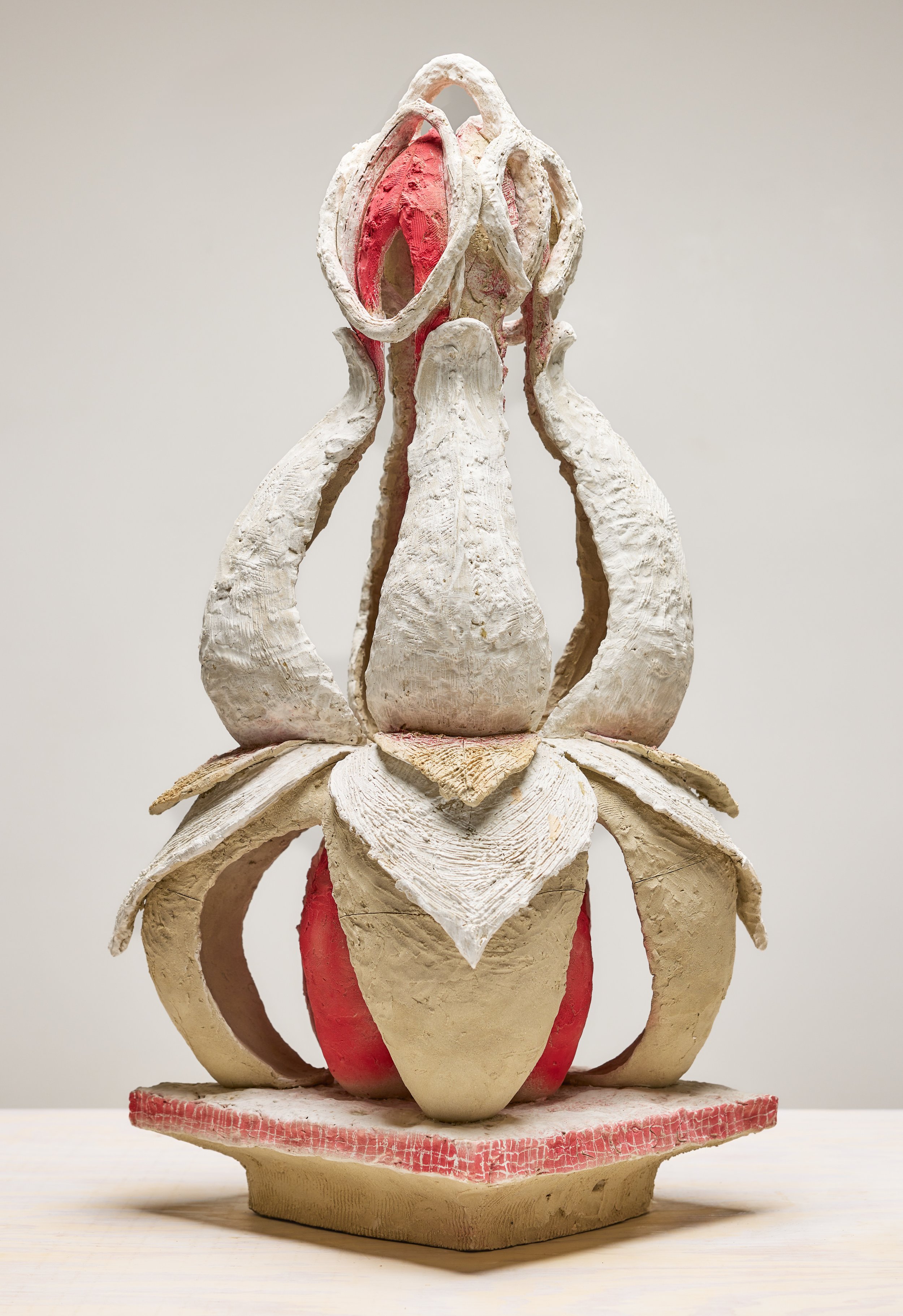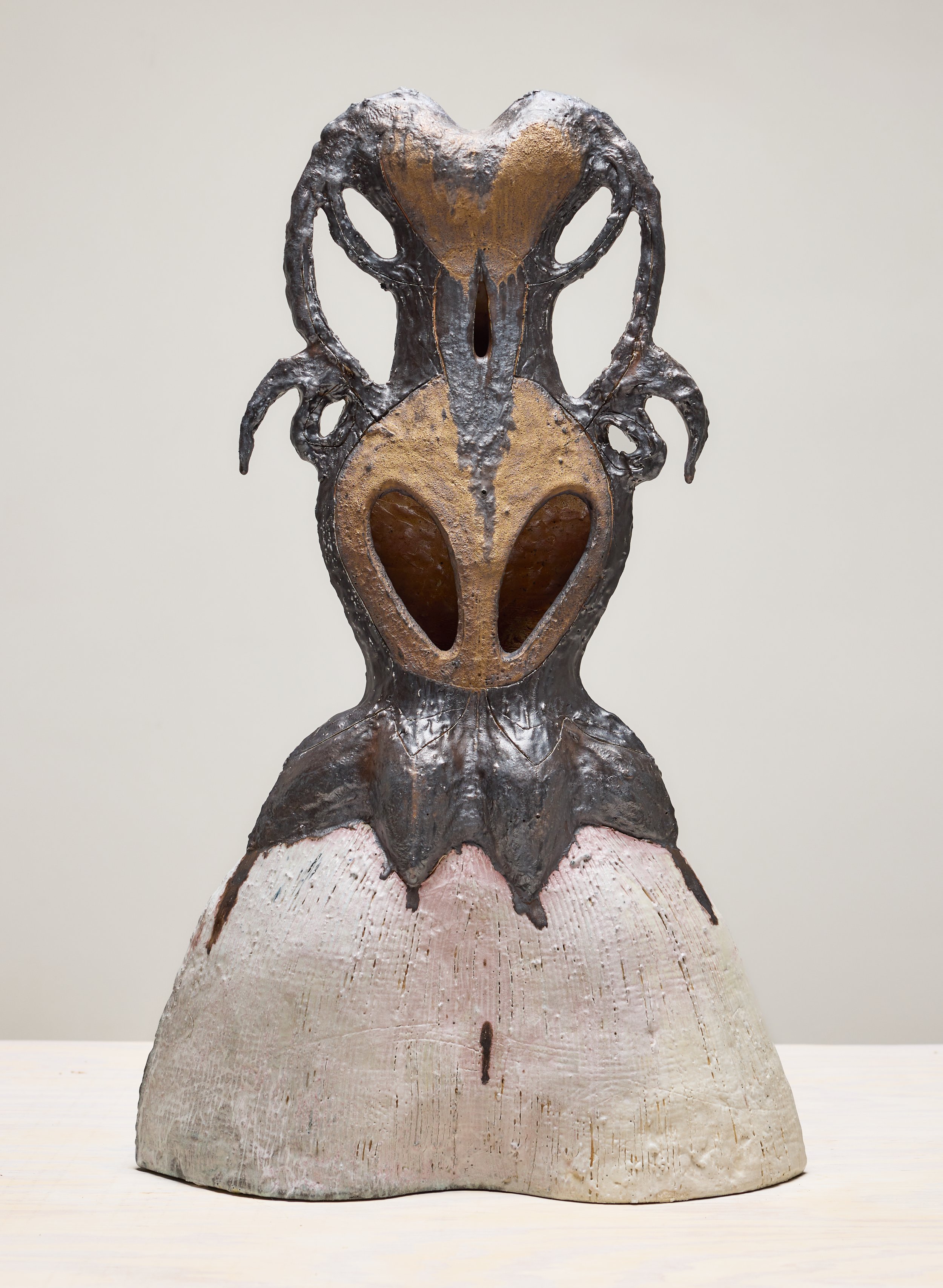Amelia Lockwood
Rose Pit
March 29 – May 10, 2025
Upended and weight-defying, Amelia Lockwood’s Rose Pit stages a drama of inverted florals caught in cosmic suspension. The symbols of sentimentality and devotion exist in a state of precarity, arrested at the fissure between the actual and the possible. The burdened blossoms curl inward, becoming an unlikely fulcrum for thorned stalks that thrust into the air. Pressed to the ground, petals ossify into structure, the roles of display and displayed reversed. Framed in tendrilous ridges, stems of thistle coalesce in spiny crowns. The lily, rather than conceding to gravity in wilt, solidifies into an architectural proposition. Intricacy begets resilience, and resilience manifests as tensile adaptability, a gravity-laden bloom recalibrates its load-bearing potential.
Lockwood’s material choices underscore this paradox. Delicate structures belie the high-fired durability of porcelain, a medium that deceives in its fragility while enduring in its permanence. Trims of florid coils, typically a supporting element in hand-built ceramics, become the primary event itself, forming intricate lattices that hover between the organic and the baroque. Roses and thistles entwine in matrices that recall Art Nouveau’s vegetal arabesques and Surrealism’s hallucinatory distortions of nature. Like gazing into the hollowed remains of something once alive, thistle stems echo woven husks of exoskeletons, filaments webbed like mycelium, at once scaffold and shell. In the deceptively robust porcelain, these interlocked networks appear poised at the brink of dissolution, their (in)vulnerability wielded equally as aesthetic and conceptual tool.
Salt and soda ash mottle the surfaces, while raw clay punctuates moments of exposure as Lockwood continues to explore atmospheric firing techniques; embracing the kiln as an alchemical collaborator. In this volatile chamber, chemical reactions blush, char, and scorch the surface, folding unpredictability into the work’s structure. Like calcified cocoons, the encrusted surfaces seem exhumed from the primordial past. Vertebral ridges accumulate, enclosing deep cavities that breathe between the decorative and the skeletal, trembling on the precipice of the grotesque. If the fired florals register as spectral remains, the lilies present fuller swaths of stone clay bodies. Their textured, downward-facing petals unfurl as architectural foundations rather than fleeting filigree. A muted palette of ossified white, blue, red, and raw ochre cloak in a bone-dry hush.
Symmetrical and hypnotic, wall-mounted dark stars reduce form to abstraction. Their coiled tessellations realign in concert with the anti-blooms; remapping constellations and shifting gravitational fields. Suspended between the mortal and the mythical, the pastoral and the cosmic, these inverted blossoms pose an unresolved question: where do they belong? Reaching skyward in search of sustenance or guidance, they bridge the terrestrial with the extraterrestrial. Earth, water, fire, and air become conduits of transformation, dissolving categorical hierarchies in the process. Here, elemental orders collapse, axes skew, and orientation remains in flux. Rose Pit unsettles spatial logic, proposing a world where direction is more of a negotiation than fixed coordinates.
Exhibition text by Marie Heilich 𓍯
Amelia Lockwood (b.1990, Stroudsburg, PA) is an artist who primarily works with ceramic to produce sculptures that reference sites of collective exchange: celestial, geological, psychic, and architectural. She received her BFA from Syracuse University (2012), completed post-bac studies at the University of Colorado, Boulder (2016), and received her MFA in Ceramics from The University of California, Los Angeles (2020). She lives and works in Los Angeles.



















